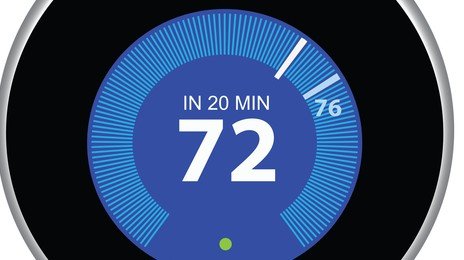The key to optimizing heating and cooling energy usage in your home lies in your thermostat settings. The goal is to save energy without sacrificing comfort. In some ways, the evolution of thermostats is analogous to innovations in car windshield wipers.
Thermostat Evolution
For decades, residential energy consumers had manual mercury thermostats. This stage of thermostat technology was similar to just having three windshield wiper settings: off, low, and high. When you were uncomfortable, you bumped the dial setting in the desired direction. When you needed to save on your monthly electricity bill, you adjusted the dial to get the system to cycle less often. This was a simple and unsophisticated approach to heating and cooling management.
Programmable thermostats marked the next major technology change. Continuing the automotive analogy, this roughly corresponds to intermittent wiper settings. Programmable thermostats allowed consumers to enter different temperature settings for different times of the day and days of the week. Programming different settings for nights or times when the home was unoccupied provided an opportunity for energy optimization. The problem with programmable thermostats, similar to intermittent wiper settings, is that the consumer had to constantly fiddle with the control pad to get things right. Studies showed that the majority of homeowners simply used their programmable thermostats like manual thermostats.
Nest Learning Thermostat
This brings us to smart thermostats like the Nest Learning Thermostat. The Nest thermostat learns your preferences, automatically detects home occupancy, and then adjusts heating and cooling settings accordingly. Think of it along the lines of rain-sensing windshield wipers that automatically adjust to your needs with a minimal amount of interfacing. Programmable thermostats simply could not adjust to the varied schedules and constant comings and goings of home occupants. The Nest thermostat uses sophisticated algorithms to program itself to the needs of each individual home. It also has an impressive dashboard that allows the consumer to access operating information and control the system from any Internet-enabled device.
Electricity Plan Tie-ins
One of the issues holding back wider adoption of the Nest thermostat has been its cost (around $250). Fortunately, a number of electric providers have developed Nest-friendly rate plans that often include a free Nest thermostat. Reliant Energy’s Learn and Conserve Plan provides a free Nest thermostat in exchange for signing up for a two-year fixed price plan. Reliant Energy also offers customers an opportunity to enroll in their Degrees of Difference program. Under this program, customers receive a $5 per month bill credit from May through October. During critical energy events, the Nest thermostat automatically adjusts the temperature by no more than three degrees for a maximum of 30 minutes. Customers retain the option of changing the temperature at any time.
Direct Energy offers customers its Comfort & Control plan in both 24 and 36-month terms. The plan comes with a free Nest thermostat and a six-month Cooling and Maintenance Plan. Both the Reliant and Direct Energy plans offer customers an economical way to access the benefits of smart thermostats without the upfront costs.



This definitely sounds like something we should look into, as our house has vaulted ceilings, and the electricity bill is insanely high. And to be honest, the cost of the Nest thermostat doesn’t sound too high, especially when you think of the money you could be saving.
Worth the investment. Stay comfortable and save money without much thought.